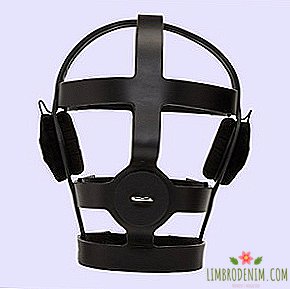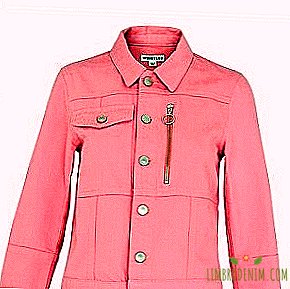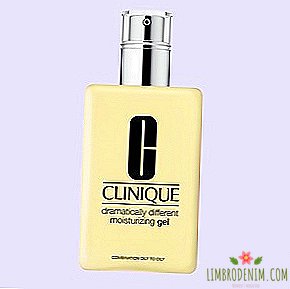"Red to meat, white to fish": How to love wine and start to understand it
For someone wine is a way of life., for others - a cultural tradition, but most of those and others want to be better guided in wine, at least finding themselves in a store. How to choose what you need, and it is advisable not to go broke - an urgent question for many, regardless of the tasks. We asked Darius Hripushin, the author of Telegram-channel Doctor Wine, to arrange an educational program for everyone who loves wine.

Red, white or pink?
First, decide what kind of wine you want - and we are talking about an elementary definition of color: red, white, pink. There are orange and blue wines now, but this is a story for very advanced users or experimenters. Most likely, you already know whether you like red or white wine; from my own experience I can say: if you have not yet understood what you like and cannot decide - try pink, it contains less tannins than red. Tannins are polyphenols of the grape skin, which are responsible for the structure of the wine, give it the very bitterness and astringent sensation in the taste. Since there is less of them in rose wine, the taste is refreshing and with sweetish berry notes.
In addition to color, it would be good to decide on the content of residual sugar in wine: dry, semi-dry, semi-sweet or sweet. This will make life easier for you and the consultant, if you consult with him, and generally save time. Here's a crib for you: sweet wines are sweet, they really taste sweet like candy and are not suitable, for example, to drink with food at dinner. Dry wines are the most common, and semi-dry wines may appeal to those who seem dry too sour or tart.
It is better to refuse semisweet wines at all: no, not because when you drink it, a little kitten cries somewhere; and not because in the whole world it is considered a bad form. A semi-sweet wine is bad because it is bad, and sugar is used to disguise its poor quality: it is made from unripe grapes or with a criminal excess of yield from a bush. This wine does not allow to enjoy and delicious food, discord with it.
Beautiful does not mean good
We are all victims of labels - and sometimes we buy wine because of the “beautiful picture”. Fortunately, then comes the experience, and with it - the understanding that the content is more important than the form. To easily choose the wine in the store, you need to learn how to read the information on the label. For example, if on the front side of the bottle there is no name of the farm and producer, then it is worth considering whether you need to understand who made the wine.
The year of the grape harvest must also be indicated - otherwise it is possible to obtain a mixture of berries of different varieties that have not matured in the same year. Without specifying the "year of birth" they sell either, unfortunately, a product from cheap wine materials, it is not clear where it was harvested by whom, or table wine. Table wine itself is not so bad, there are fewer requirements for it: there may not be a specific year of birth, you can not specify where the grapes come from. Table wine is inexpensive and suitable for a large family dinner in the open air, for example, in a country house with kebabs, when there is no need to open bottles of good aged wine - there will still be no chance to evaluate its subtleties. I do not advise taking any outstanding wines with you in nature - the wine loses its aromas and properties in the open air.
Sometimes the producer sings the praises of grapes as "best" or "selective", but you need to pay attention to the indication of specific varieties on the front or back label. Grape varieties are, for example, merlot, sauvignon blanc, cabernet sauvignon, nutmeg, sanjovese, carmenère. Sometimes, according to the law, it is not necessary to indicate the variety - the composition in French wines is often not written. In this case, not all French wines are good, therefore, as long as you are not very well oriented, it is better to choose other regions.

Region and Exposure
For decent wines, an indication of origin is required. The wine must have a "house" in the form of a region or the so-called appellasona - the production zone. In each country there are famous places whose names speak for themselves: Rioja or Ribera del Duero in Spain, Bordeaux or Provence in France, Mendoza in Argentina. If the region is not indicated on the label, then it is often a question of poor quality wine, the manufacturer of which does not want to be discovered. As for the country - French wines are often more expensive just because they are French, and other European wines often suffer from cheating. It makes sense to pay attention to the countries of America, Australia, South Africa - for the same money you are likely to buy wine that will be better than French or Italian.
With other conditions being equal, aged wines are better than those that are unreserved, but they cost a little more. Most often we are talking about aging in oak barrels - oak gives the wine unique wood tones, smooths and "calms" the taste. There is aging in steel tanks - and this is also not bad, because not all grape varieties get along with oak. But if you want something light and fruity in style, then it is not necessary to pay attention to the way of aging. Bottle aging is mandatory for almost all types of wine. Depending on the production technology, some wines are bottled after fermentation, others - after barrel aging.
Some manufacturers emphasize their high-quality wines with certain formulations - for example, "Riserva" in Italy (aging from 2 to 3 years in a bottle) or "Crianza" in Spain (at least 2 years of aging in a barrel, steel container or bottle). This means that the wines were aged for a strictly defined time, and the best berries from the harvest were collected for their production. But there are countries in which the inscription "Reserva / Reserve" is not enshrined in law and absolutely does not mean anything, but only plays the role of a marketing ploy - Chile and France sin in this.
Price and age
Wine, if it is not sold on special offer, can not cost less than 500 rubles. If there is a cheat already in the store, then how much is this wine actually worth? To make a quality wine, you need to put a lot of effort, time and money, it is very laborious and costly work. At the same time, a very high price is also not an indicator of quality and taste. A basic white, not the most outstanding wine from the French region of Burgundy costs two thousand rubles, and for this money you can find a wonderful, much more interesting wine from the countries of the New World - the same Chile or Argentina. In addition, buying a too expensive wine not in a specialized wine cellar, you may encounter certain risks: not the fact that the wine was stored and transported according to all the rules.
There is such a popular myth about wine - supposedly the older the better. But many wines, such as those from Pinot Grigio grapes, should be drunk young, and for the French Beaujolais, aging is completely destructive. Table wines can last for up to three years, light white and red need from four to eight, noble white wines - ten or even twenty years. Saturated dry red wines can be aged even longer - thirty-five years, and one hundred years of aging will not harm the best red of outstanding years. Finally, the aging of strong and dessert wines can reach one hundred and fifty years.
Corks and glasses
Neither a cork made of cork nor a metal screw cap is a measure of the quality of the wine. Spinning caps are more common in the wines of the New World, where they know a lot about the distribution of resources and the application of the latest technologies. Wines with metal lids have several advantages: they are cheaper because the bark of the cork tree costs a lot of money; their production is more environmentally friendly, because the cover is not a living tree, but a piece of iron; wine under cork during oxidation and storage may be oxidized due to ingested air, and the screw cap is almost a guarantee of absolute tightness. Of course, the real cork is charm and style, especially in the case of expensive and rare wines. The screw cap is an excellent solution for young wines that are drunk within 3-5 years after production.
Wine should be drunk from glasses intended for him. The shape of the glass can change our perception of taste and reveal the aroma of wine in full force: if you underestimate the importance of glasses, you can deprive yourself of a significant amount of pleasure. The glass should be glass, transparent and perfectly clean, for example, without residual water. The shape of the glass determines the area of contact of the wine with oxygen, affecting the taste of the wine - therefore, for red wines, deep and wide glasses are used, which need to be filled only by one third. For white wines need glasses, in which the bottom is expanded, and the edges are narrowed, and pour the white wine in the glass should be about half. For sparkling and sparkling wines, you need to choose a long narrow glass like “flute”, the shape of which will slow the disappearance of bubbles.

Temperature and combination with food
Proper serving temperature does not make wine better, but helps it to reach its full potential. White wine should be drunk very cold; There is little that can be worse than warm white wine, so before serving it is imperative to keep it in the fridge for at least half an hour (or better an hour). True, there are wines that are better not to cool too much - for example, the Italian variety vermentino, which has a very fine and lush floral aroma and which will last half an hour in the fridge. Red wines should also be slightly chilled: although they say that it is better to serve them “warm”, this is a comparison with white ones, and not absolute temperature.
In most cases, the better and more expensive the wine, the less time it has to cool. This does not apply to champagne - this wine should always be served cold, at a temperature of 7 degrees. If for white wines the optimum temperature is 14-16 degrees, then for red wines it is 16-18 degrees - far below the usual room temperature of about 22. In general, with respect to temperature, the following rule works: acidity of wine is enhanced by cold, and strength - by heat. And I ask you, do not throw ice in wine, do not make a mistake.
Before you drink wine, let it "breathe." This applies primarily to red wines. Just pour the wine into the glass and roll it - the oxygen will do its job and the wine will open in a beautiful bouquet. If the wine is aged in a barrel or has a powerful and dense structure, then decantation will not interfere with the aroma and calm down a little this structure. This requires a decanter - a carafe for wine, which is designed for settling and aeration, that is, contact with air. This is a necessary thing in the household if you like bright, dense or oak-aged wines. Some white wines and champagnes can also be decanted, but this story is more suitable for expensive and rare wines.
There are certain recommendations in the compatibility of wine and gastronomy, but there can be no strict rules in this matter. Red can perfectly open up with some fish, and not just with a stereotyped steak, and white - quite fit the red meat: for example, veal goes well with white chardonnay. If you like to drink merlot, snacking on squash caviar from a canister rolled up by your grandmother, and this will make you happier, then how can someone forbid it?
How can cavist help
Make friends with Cavist - a man working in a wine collection. This is the specialist who offers you exactly what you want, but cannot choose for some reason. I myself work as a cavist: I cannot say that I communicate with first-time people in some other way, but for regular customers I am a valuable source of information and a guide to the world of wine pleasure. I remember each client, his tastes and preferences, my job is to make his choice easy and correct. But, of course, whatever advises you, listen first to yourself.
If you didn’t like wine, which everyone is delighted with, don’t force yourself to drink it and certainly don’t think that “you don’t understand something”. Tastes in relation to wine can be compared with visual ones: someone loves minimalism, while someone loves gold stucco and carved furniture. There is no universal taste. Try, remember, record your feelings and impressions. Do not blindly trust wine critics and applications, remember that reviews are written by the same people as you. There are wines that most often meet the universal taste, but it is better to engage in this exciting game and find a wine that you like exactly. I advise you to switch more often, not to hang out on one variety or region you like: if you like Sauvignon Blanc from France, try New Zealand or Chile. It is not necessary to turn the process of drinking wine into intense intellectual activity; leave it to wine critics and snobs. And in general - do not show off. Do not pay attention to the label, drink at your pleasure. Taste develops on taste, not on the price of a bottle.
Photo: andersphoto - stock.adobe.com, romanslavik.com - stock.adobe.com, Dmytro Sukharevskyi - stock.adobe.com





